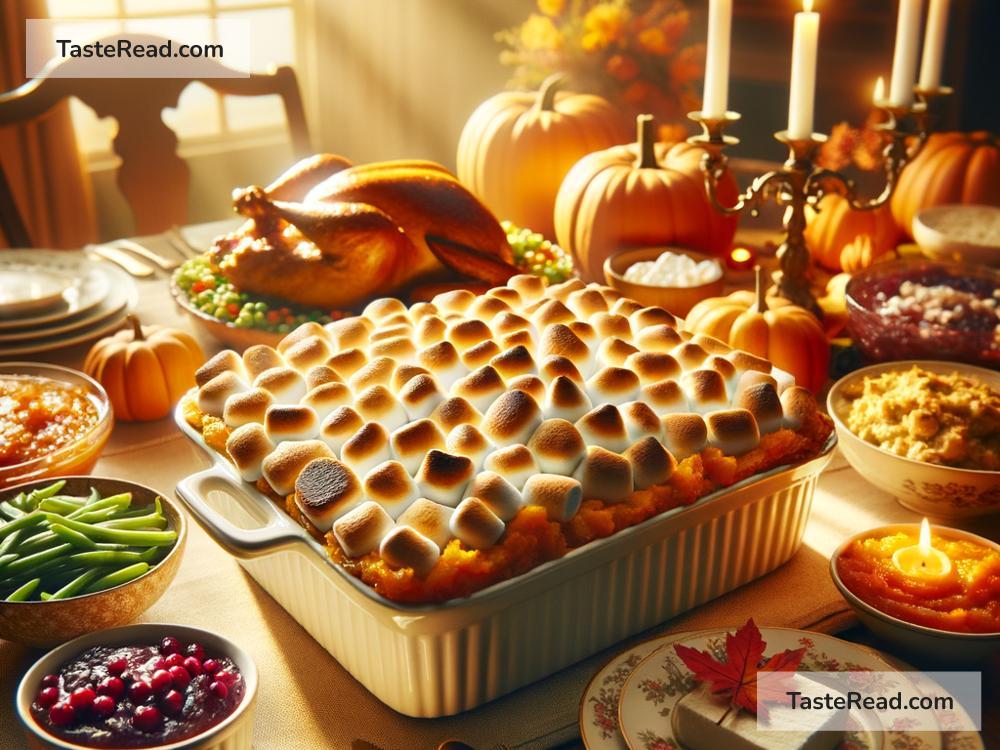The Truth About Yams and Their Role in Festive Dishes
Yams are a delicious and versatile food that often make an appearance on dinner tables around the holidays. Whether they’re baked, mashed, or served in casseroles, they hold a special place in many festive traditions. However, the word “yam” sometimes creates confusion, especially in countries like the United States. So, what are yams really, and why do they play such an important role in holiday meals? Let’s dig deeper into the truth about yams.
Yams vs. Sweet Potatoes: Are They the Same?
One of the biggest misunderstandings about yams is that most people confuse them with sweet potatoes. In fact, many dishes labeled as “yam” recipes actually use sweet potatoes instead of real yams. This is because of a naming mix-up that started several decades ago in the U.S.
True yams and sweet potatoes are from two completely different plant families. Yams are starchy tubers that grow mostly in Africa, Asia, and the Caribbean. They have rough, scaly skin and white, purple, or yellow flesh, depending on the variety. Sweet potatoes are native to Central and South America and have smoother skin, with flesh that is usually orange but can also be white or purple.
The confusion started when sweet potatoes were introduced to North America. There are two types of sweet potatoes: softer, orange-fleshed varieties and firmer, pale-fleshed varieties. To help sell the softer, sweeter type of sweet potato, marketers started calling them “yams,” even though they weren’t true yams. Over time, the name stuck, and now many people think yams and sweet potatoes are the same thing. But the truth is, most holiday dishes featuring “yams” are actually made with sweet potatoes.
A Holiday Favorite
While true yams may not be the star of your dinner table, sweet potatoes (often mislabeled as yams) definitely hold a special place in festive dishes. This is mainly because of their sweet taste and ability to pair well with ingredients like cinnamon, brown sugar, marshmallows, and butter.
One of the most popular dishes featuring “yams” during the holidays is candied yams. This dish, typically made with sweet potatoes, is baked in a sugary syrup with spices that give it a warm, comforting flavor. Marshmallows are often placed on top and toasted until golden brown, adding a gooey sweetness that people of all ages enjoy. Candied yams are especially common during Thanksgiving and Christmas dinners in the United States.
Another beloved recipe is sweet potato casserole. Many families customize this dish with unique toppings, like pecans, shredded coconut, or even crushed cookies. It’s the perfect way to add a sweet touch to a festive menu.
Nutritional Benefits
Whether you use real yams or sweet potatoes in your cooking, you’ll be getting a nutritious food. Both are high in vitamins and minerals that your body needs to stay healthy. Sweet potatoes, for instance, are an excellent source of vitamin A, which helps improve your vision and boost your immune system.
True yams are also a healthy choice. They are rich in fiber, helping with digestion, and they contain potassium, which supports heart health. Yams are less sweet than sweet potatoes and can even be treated as a savory food in dishes like soups and stews.
The problem arises when people add lots of sugar, butter, and marshmallows to holiday recipes. While these additions make the dish taste amazing, they also lower the nutritional value. For those who want to enjoy healthier versions of traditional holiday foods, it’s easy to reduce the amount of sweeteners or swap heavy toppings for lighter ones like nuts or spices.
Cultural Traditions and Symbolism
Yams and sweet potatoes also hold cultural significance in certain parts of the world. True yams are a staple of the diet in West Africa, where they are used in many traditional dishes such as yam porridge and yam pounded into a dough-like consistency called “fufu.” In these cultures, yams are often seen as symbols of abundance and prosperity.
In the U.S., sweet potatoes are closely tied to Thanksgiving traditions. They represent warmth, comfort, and the idea of coming together with loved ones. Because of their satisfying sweetness, they add a touch of joy to the dinner table.
Why We Love Yams and Sweet Potatoes
The main reason yams—and sweet potatoes—are so loved during the holidays is their ability to bring people together. Whether someone is preparing a classic casserole or simply serving roasted sweet potatoes, these dishes hold memories and traditions for many families. For some, they’re a reminder of Grandma’s cooking or the joy of sitting down to eat with loved ones.
But beyond just taste, yams and sweet potatoes tell a story of how food evolves in culture. What started as a simple tuber has become a centerpiece of festive meals enjoyed by millions of people. Their versatility and cultural importance make them more than just a part of the menu—they’re a meaningful symbol of celebration.
So, the next time you see “yams” on the holiday table, take a moment to appreciate the truth about this humble tuber. Whether it’s made from sweet potatoes or genuine yams, it’s bound to be a dish full of flavor, tradition, and plenty of festive cheer.


